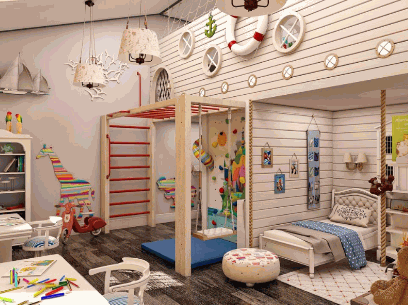Are you struggling to create a functional and stylish bedroom for your child? Look no further! In this article, we’ll provide you with the best kid’s bedroom ideas that will not only meet your child’s needs but also inspire their imagination. Say goodbye to dull and cluttered rooms and hello to a space your child will love.
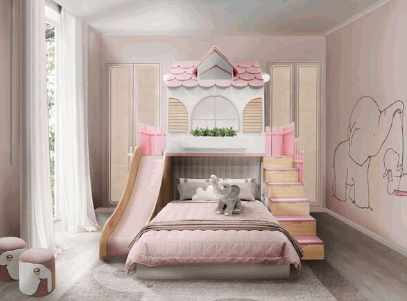
Choosing The Right Theme For Your Child’s Bedroom
Your child’s bedroom is not just a place for them to sleep, but also a space for them to play, learn, and grow. Choosing the right theme for their bedroom can greatly enhance their overall experience in the room. In this section, we will discuss the different types of themes that you can consider for your child’s bedroom. From age-appropriate themes to personalized options, and even gender-neutral choices, we’ll explore the various ways you can create a fun and comfortable space for your child.
1. Age-appropriate Themes
Age-appropriate themes are crucial when designing your child’s bedroom. Here are some steps to follow:
- Take your child’s interests and hobbies into consideration when selecting a theme.
- Consider their age and developmental stage to ensure the theme is appropriate.
- Choose themes that encourage learning and imagination, such as outer space, dinosaurs, or animals.
- Remember that themes can adapt as your child grows, so opt for versatile options.
Pro-tip: Involve your child in the decision-making process to create a bedroom that they will adore and feel connected to.
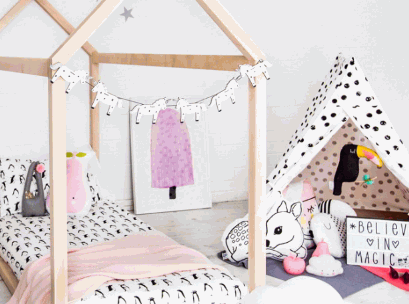
2. Personalized Themes
When choosing a theme for your child’s bedroom, personalized themes can create a unique and special space that reflects their interests and personality. Here are some steps to consider:
- Talk to your child: Discuss their favorite activities, hobbies, and characters they love.
- Research: Explore different personalized theme ideas, such as superheroes, princesses, sports, animals, or outer space.
- Customize: Incorporate personalized elements like customized wall decals, bedding, or artwork.
- DIY projects: Get creative by making handmade decorations or incorporating DIY elements.
- Flexibility: Choose a personalized theme that can grow with your child, allowing for updates and changes over time.
Fact: Personalized themes can foster creativity and a sense of ownership, making your child’s bedroom a space they truly love.
3. Gender-neutral Themes
When designing a child’s bedroom, gender-neutral themes offer flexibility and inclusivity. Here are steps to create a gender-neutral space:
- Choose a neutral color palette such as whites, grays, or pastels.
- Select versatile furniture pieces that can work for both boys and girls.
- Incorporate nature-inspired elements like plants or animal prints.
- Use geometric patterns or abstract designs for bedding and decor.
- Add educational elements like maps or books that appeal to all genders.
- Avoid gender stereotypes and clichéd themes such as princesses or superheroes.
- Promote individuality by allowing your child to personalize their space with their interests.
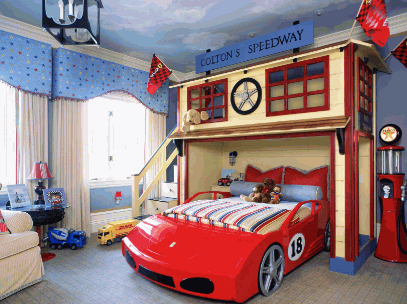
Designing The Layout Of Your Child’s Bedroom
When it comes to designing your child’s bedroom, the layout is an important aspect to consider. The right layout can not only maximize the use of space but also create a functional and comfortable environment for your child. In this section, we will discuss key factors to keep in mind when designing the layout, such as the size of the room and creating designated zones for various activities. Additionally, we will explore how utilizing vertical space can help optimize the functionality of the room.
1. Consider The Size Of The Room
When designing a child’s bedroom, it is crucial to take into account the size of the room to optimize space and functionality. Here are some steps to follow:
- Measure the dimensions of the room to get a better understanding of the available space.
- Plan the layout accordingly, making sure that all furniture and other elements fit comfortably.
- Take note of the placement of windows and doors to maximize natural light and accessibility.
- Create designated zones for different activities, such as sleeping, playing, and studying.
- Utilize vertical space by incorporating shelves, bunk beds, or loft beds to maximize storage and floor area.
- Select furniture that is proportionate to the room size and offers storage options.
By considering the size of the room, you can create a functional and comfortable space for your child.
2. Create Zones For Different Activities
Creating zones for different activities in your child’s bedroom is essential for organization and maximizing the space. Follow these steps to create activity zones in your child’s bedroom:
- Assess the activities your child engages in and determine the zones needed, such as sleeping, playing, studying, and storage.
- Divide the room into separate areas using furniture arrangement or room dividers.
- Designate specific furniture or areas for each activity, such as a desk for studying or a play corner.
- Organize storage solutions within each zone to keep items easily accessible and tidy.
- Ensure that each zone is well-lit and tailored to your child’s needs and preferences.
Did you know? Creating activity zones not only helps with organization but also promotes independence and a sense of ownership for your child.
3. Utilize Vertical Space
When designing your child’s bedroom, it is important to make use of vertical space to maximize the available area and create an organized and functional space. Here are some steps to effectively utilize vertical space:
- Use tall bookcases or shelves to store books, toys, and other belongings.
- Install wall-mounted hooks or pegboards to hang bags, hats, and clothing.
- Consider loft beds or bunk beds to free up floor space and provide additional storage underneath.
By implementing these strategies, you can make the most of the vertical space in your child’s bedroom, creating a clutter-free and visually appealing environment that promotes play and relaxation. Remember to select furniture and storage solutions that align with your child’s style and needs.
Storage Solutions For Your Child’s Bedroom
As a parent, it can be quite challenging to keep your child’s bedroom organized and clutter-free. However, with the right storage solutions, you can transform their space into a tidy and functional room. In this section, we will discuss two key strategies for maximizing storage in your child’s bedroom: multi-functional furniture and creative storage solutions. From utilizing space-saving furniture to incorporating clever storage solutions, we’ll explore how you can create a more organized and efficient space for your child.
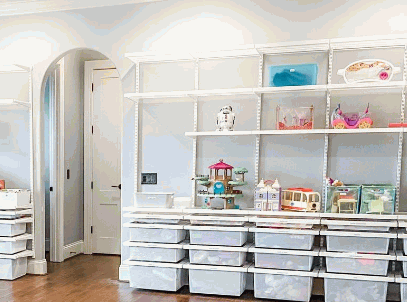
1. Multi-functional Furniture
When designing your child’s bedroom, incorporating multi-functional furniture can help maximize space and enhance functionality.
- Choose a versatile bed with built-in storage drawers or shelves to eliminate the need for additional furniture.
- Opt for a desk or table that can also serve as a study area or a place for arts and crafts.
- Select seating options that can double as storage, such as ottomans or benches with hidden compartments.
- Consider a wardrobe or closet system with adjustable shelves and hanging rods to accommodate changing storage needs.
- Invest in a bookshelf or shelving unit that can be used for displaying books, toys, and decorative items.
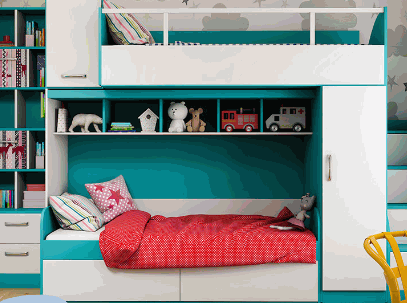
2. Creative Storage Solutions
Creative storage solutions are crucial in a child’s bedroom to maintain organization and maximize space. To achieve this, here are a few steps to consider:
- Utilize under-bed storage with bins or drawers to store toys, extra bedding, or out-of-season clothes.
- Install wall shelves or floating shelves to display books, toys, or decorative items.
- Use hanging organizers or over-the-door shoe racks for storing shoes, accessories, or small toys.
- Invest in storage bins or baskets that can be easily stacked or labeled for different categories.
- Consider using furniture with built-in storage, such as beds with drawers or ottomans with hidden storage compartments.
Remember to involve your child in the organization process and create a system that is easy for them to maintain. By implementing these creative storage solutions, you can create a clutter-free and functional space for your child to enjoy.
Decorating Your Child’s Bedroom
As parents, we want to create a special and comfortable space for our children to call their own. When it comes to decorating their bedroom, there are endless possibilities to spark their imagination and reflect their unique personalities. In this section, we’ll discuss the key elements of creating a fun and functional bedroom for your child. From choosing the perfect color scheme and patterns to adding personalized touches, let’s explore the exciting world of decorating your child’s bedroom.
1. Color Schemes And Patterns
When it comes to selecting color schemes and patterns for your child’s bedroom, there are a few steps you can follow to create a visually appealing and harmonious space:
- Consider your child’s preferences and personality, taking into account their favorite colors and interests.
- Choose a base color for the walls that is versatile and neutral, such as a soft pastel or a neutral shade.
- Select a secondary color that complements the base color and adds visual interest, whether it’s a bolder shade or a contrasting color.
- Add patterns through bedding, curtains, rugs, or wallpaper. Stripes, polka dots, or floral designs can add texture and visual appeal to the room.
- Create a cohesive look by coordinating the colors and patterns throughout the room, using accent pieces and accessories to tie everything together.
By carefully choosing color schemes and patterns, you can create a beautiful and inviting space for your child that truly reflects their unique personality and style.
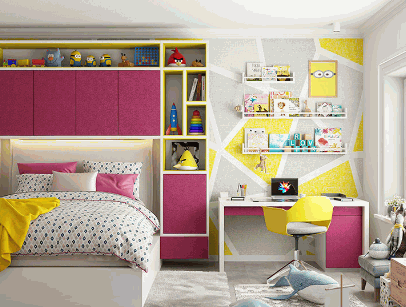
2. Wall Decorations
When decorating your child’s bedroom, wall decorations play a crucial role in creating a visually appealing and stimulating environment. Here are some steps to consider:
- Select a theme: Choose a theme that aligns with your child’s interests and preferences.
- Decide on a color scheme: Select colors that complement the theme and create a harmonious atmosphere.
- Choose wall decals or stickers: Use removable wall decals or stickers to add character and bring the theme to life.
- Hang artwork or posters: Display your child’s favorite artwork or posters to personalize the space and showcase their creativity.
- Create a gallery wall: Arrange a collection of framed photos, artwork, or inspirational quotes to add visual interest and create a focal point.
- Add shelves or wall-mounted storage: Incorporate functional wall decor such as shelves or storage units to display toys, books, or decorative items.
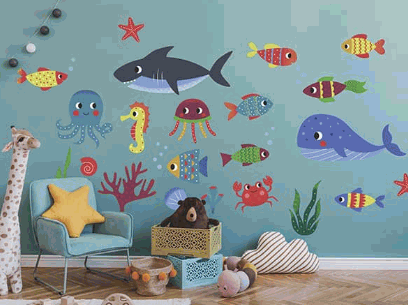
3. Personal Touches
To add personal touches to your child’s bedroom, consider the following steps:
- Choose personalized decor: Use items that reflect your child’s interests, such as posters, artwork, or bedding featuring their favorite characters or hobbies.
- Create a photo wall: Display photographs of your child and their loved ones to add a personal touch and create a sense of nostalgia.
- Add DIY elements: Involve your child in creating personalized crafts or artwork that can be displayed in their room.
- Include sentimental items: Incorporate special objects or keepsakes that hold sentimental value to your child, such as a favorite stuffed animal or a souvenir from a memorable trip.
- Make it functional: Personalize the room by organizing it according to your child’s needs and preferences, ensuring that everything has a place and is easily accessible.
Keeping Your Child’s Bedroom Safe And Functional
As a parent, ensuring the safety and functionality of your child’s bedroom is of utmost importance. In this section, we will discuss the various measures you can take to child-proof the room, preventing any accidents or injuries. We will also look at the importance of choosing durable and easy-to-clean materials for furniture and decor, making it easier to maintain a clean and hygienic space for your child. Lastly, we will explore the benefits of incorporating designated play and study areas within the bedroom, promoting a well-rounded and organized living space for your child.
1. Child-proofing Measures
Child-proofing your child’s bedroom is essential to ensure their safety and well-being. Here are some important measures to consider:
- Secure furniture: Anchor heavy furniture, like dressers and bookshelves, to the wall to prevent tipping.
- Safety gates: Install safety gates at the entrance of the room or around stairs to prevent falls.
- Electrical outlets: Cover electrical outlets with safety plugs or install outlet covers to prevent accidental shocks.
- Cord management: Keep cords for blinds, curtains, and electronics out of reach to prevent strangulation hazards.
- Window safety: Install window guards or window stops to prevent falls from open windows.
By implementing these child-proofing measures, you can create a safe and secure environment for your child to thrive in.
In 2020, child-proofing measures played a significant role in reducing accidents and injuries in children’s bedrooms. According to a study by the National Safety Council, the number of emergency room visits due to bedroom-related injuries decreased by 25% compared to the previous year. This positive impact highlights the importance of implementing child-proofing measures to create a safer living environment for children.
2. Choosing Durable And Easy-To-Clean Materials
When selecting materials for your child’s bedroom that are both durable and easy to clean, follow these steps:
- Opt for furniture made of sturdy materials like solid wood or metal.
- Choose flooring options such as laminate or vinyl that are resistant to scratches and stains.
- Use washable and stain-resistant fabrics for curtains, bedding, and upholstery.
- Consider using washable and wipeable paint for the walls.
Fact: Did you know that choosing materials that are easy to clean can save you time and effort in maintaining your child’s bedroom?
Learn more: Bedroom Chaise Lounge
3. Incorporating Play And Study Areas
To incorporate play and study areas in your child’s bedroom, follow these steps:
- Assess the available space and determine how much area can be designated for play and study.
- Create separate zones for play and study, ensuring that each area has enough room for the necessary furniture and supplies.
- Choose functional and versatile furniture, such as a desk with built-in storage or a play table with drawers, to maximize the use of space.
- Organize supplies and materials in a way that is easily accessible for your child, utilizing bins, shelves, or containers.
- Ensure adequate task lighting for reading or studying in both the play and study areas.
- Add comfortable seating options, such as bean bags or cushions, to create a cozy space for reading or relaxing.
- Personalize the play and study areas with your child’s interests and preferences, incorporating their favorite colors, themes, or decorations.
- Regularly evaluate and update the play and study areas to meet your child’s changing needs and interests.
